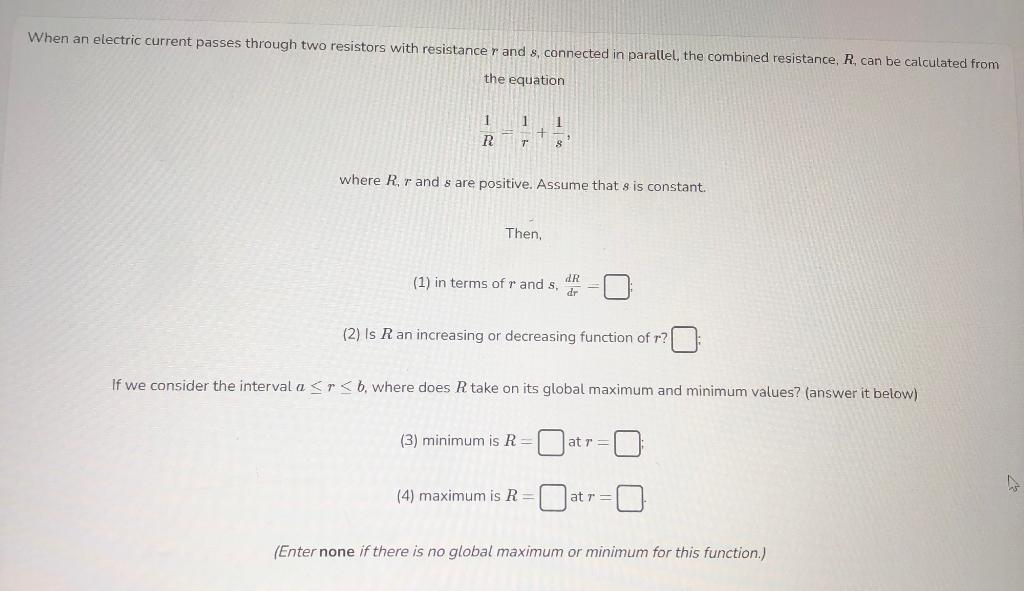Home /
Expert Answers /
Calculus /
when-an-electric-current-passes-through-two-resistors-with-resistance-r-and-s-connect-pa949
(Solved): When an electric current passes through two resistors with resistance \( r \) and \( s \), connect ...
When an electric current passes through two resistors with resistance \( r \) and \( s \), connected in parallel, the combined resistance, \( R \), can be calculated from the equation \[ \frac{1}{R}=\frac{1}{r}+\frac{1}{s} \] where \( R, r \) and \( s \) are positive. Assume that \( s \) is constant. Then, (1) in terms of \( r \) and \( s, \frac{d R}{d r}= \) (2) Is \( R \) an increasing or decreasing function of \( r \) ? If we consider the interval \( a \leq r \leq b \), where does \( R \) take on its global maximum and minimum values? (answer it below) (3) minimum is \( R= \) at \( r= \) (4) maximum is \( R= \) at \( r= \) (Enter none if there is no global maximum or minimum for this function.)
Expert Answer
The given relation is, 1R=1r+1s rewrite, 1R=r+srsR=rsr+sR=s[rr+s]R=s[r+s?sr+s] split, R=s?s2r+s diff wrr r, dRdr=?(?s2(r+s)2)dRdr=s2(r+s)2?????(1)
